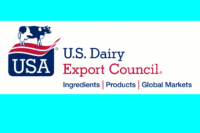Can China Slack Dairy Exporters Thirst?
In the last three years, China has become the world’s largest single dairy importer by far. The nation purchases more than twice as much as runner-up Russia.
In the last three years, China has become the world’s largest single dairy importer by far. The nation purchases more than twice as much as runner-up Russia. As such, it is almost impossible to understate the impact of the melamine crisis on the global dairy situation since the fall of 2008.
From 2002-07, China increased milk production by 4-5 million tons (9-11 billion pounds) per year. We forget sometimes, but China was a relatively minor importer (other than whey) up until 2008. In fact, in 2007 and 2008, China was a net exporter of whole milk powder. In other words, domestic production was pretty much keeping up with consumption growth.
All that changed with the melamine crisis. China dairy consumption declined immediately following the crisis, then it came back fairly quickly. But with the restructuring of the domestic milk sector, production declined and imports exploded.
Try to imagine what the world dairy situation would look like without China’s buying over the last three years. From 2007-10, global trade of milk powder, cheese and butterfat increased by 822,000 tons, according to the Food and Agricultural Policy Research Institute (FAPRI). During that same time, China’s net imports increased by 405,000 tons. So, one country accounted for nearly half of all the increase in global dairy trade since 2007.
Of course, you could make the case that China’s domestic production growth rates were illusory, that the same corner-cutting that got the sector in trouble in 2008 was what enabled China to grow so quickly in the first place. Maybe it would be importing huge quantities now anyway if the nation had done things differently from the start because local production would have grown more slowly.
China’s thirst for milk
Either way, the structural tightness of the world dairy industry today is due, more than any other factor, to China’s unquenchable thirst for milk. Short-term, lack of consumer confidence in domestically produced infant formula, milk and other dairy products should keep imports high. It is the highest-impact example of the larger global trend of the increasing dairy consumption by the rising middle class in emerging economies.
But what about later? As China restructures and reinvests in its domestic dairy industry, will it eventually be able to serve its population and cut back on imports? This is a critical question. As the U.S. dairy industry gears up to rely more heavily on overseas growth, we need to know if China will remain a disproportionately huge draw on world milk supplies or if its buying is a temporary, melamine-driven phenomenon.
The Innovation Center for U.S. Dairy’s “Globalization Refresh: 2011 Update”, a strategic analysis of the world dairy landscape funded by dairy check-off promotion funds through USDEC released this summer, concluded that despite foreign investments, commercial dairy farms in China will be unable to keep up with ongoing demand growth.
The report cites China’s economic development, which will add 200 million more people to its middle class by the end of the decade. Meanwhile, an influx of investment over the next few years will continue to stimulate demand in foodservice and retail channels and improve a still vastly underdeveloped cold chain.
Yes, China’s milk production will grow. The nation’s latest five-year plan aims to modernize the dairy sector with measures that will boost productivity and efficiency. Investors are trying to set up Western-style, large-scale dairies. But the cost of quality milk production in China is turning out to be very high, estimated at more than $20/cwt. Resources (water and feed) are scarce. And even New Zealand’s investments in local farms will add just a fraction of total production. Whereas production growth rates averaged more than 20% per year from 2000-07, FAPRI forecasts expansion of just 5% per year from now to 2025.
Cheaper to import than produce
The economics are such that the Chinese can’t produce milk as cheaply as they can import it. The situation is facilitated by relatively low import tariffs, plus a free-trade agreement with New Zealand and a pending deal with Australia. In addition, other regions are expected to ramp up import needs as well. Consumption growth in India, Southeast Asia, the Middle East and North Africa will account for more than half the global increase in non-fluid dairy use over the next four years, the Globalization Refresh report says.
Structurally higher prices will encourage dairy supply growth throughout the world in the years ahead. Still, the United States can increase supply as cheaply as just about anyone, putting the U.S. industry in a good position to capitalize on its still-improving ability to meet diverse product needs - from China and elsewhere.
Tom Suber is president of the U.S. Dairy Export Council, Arlington, Va. He can be reached at tsuber@usdec.org.
In the last three years, China has become the world’s largest single dairy importer by far. The nation purchases more than twice as much as runner-up Russia. As such, it is almost impossible to understate the impact of the melamine crisis on the global dairy situation since the fall of 2008.
From 2002-07, China increased milk production by 4-5 million tons (9-11 billion pounds) per year. We forget sometimes, but China was a relatively minor importer (other than whey) up until 2008. In fact, in 2007 and 2008, China was a net exporter of whole milk powder. In other words, domestic production was pretty much keeping up with consumption growth.
All that changed with the melamine crisis. China dairy consumption declined immediately following the crisis, then it came back fairly quickly. But with the restructuring of the domestic milk sector, production declined and imports exploded.
Try to imagine what the world dairy situation would look like without China’s buying over the last three years. From 2007-10, global trade of milk powder, cheese and butterfat increased by 822,000 tons, according to the Food and Agricultural Policy Research Institute (FAPRI). During that same time, China’s net imports increased by 405,000 tons. So, one country accounted for nearly half of all the increase in global dairy trade since 2007.
Of course, you could make the case that China’s domestic production growth rates were illusory, that the same corner-cutting that got the sector in trouble in 2008 was what enabled China to grow so quickly in the first place. Maybe it would be importing huge quantities now anyway if the nation had done things differently from the start because local production would have grown more slowly.
China’s thirst for milk
Either way, the structural tightness of the world dairy industry today is due, more than any other factor, to China’s unquenchable thirst for milk. Short-term, lack of consumer confidence in domestically produced infant formula, milk and other dairy products should keep imports high. It is the highest-impact example of the larger global trend of the increasing dairy consumption by the rising middle class in emerging economies.
But what about later? As China restructures and reinvests in its domestic dairy industry, will it eventually be able to serve its population and cut back on imports? This is a critical question. As the U.S. dairy industry gears up to rely more heavily on overseas growth, we need to know if China will remain a disproportionately huge draw on world milk supplies or if its buying is a temporary, melamine-driven phenomenon.
The Innovation Center for U.S. Dairy’s “Globalization Refresh: 2011 Update”, a strategic analysis of the world dairy landscape funded by dairy check-off promotion funds through USDEC released this summer, concluded that despite foreign investments, commercial dairy farms in China will be unable to keep up with ongoing demand growth.
The report cites China’s economic development, which will add 200 million more people to its middle class by the end of the decade. Meanwhile, an influx of investment over the next few years will continue to stimulate demand in foodservice and retail channels and improve a still vastly underdeveloped cold chain.
Yes, China’s milk production will grow. The nation’s latest five-year plan aims to modernize the dairy sector with measures that will boost productivity and efficiency. Investors are trying to set up Western-style, large-scale dairies. But the cost of quality milk production in China is turning out to be very high, estimated at more than $20/cwt. Resources (water and feed) are scarce. And even New Zealand’s investments in local farms will add just a fraction of total production. Whereas production growth rates averaged more than 20% per year from 2000-07, FAPRI forecasts expansion of just 5% per year from now to 2025.
Cheaper to import than produce
The economics are such that the Chinese can’t produce milk as cheaply as they can import it. The situation is facilitated by relatively low import tariffs, plus a free-trade agreement with New Zealand and a pending deal with Australia. In addition, other regions are expected to ramp up import needs as well. Consumption growth in India, Southeast Asia, the Middle East and North Africa will account for more than half the global increase in non-fluid dairy use over the next four years, the Globalization Refresh report says.
Structurally higher prices will encourage dairy supply growth throughout the world in the years ahead. Still, the United States can increase supply as cheaply as just about anyone, putting the U.S. industry in a good position to capitalize on its still-improving ability to meet diverse product needs - from China and elsewhere.
Tom Suber is president of the U.S. Dairy Export Council, Arlington, Va. He can be reached at tsuber@usdec.org.
Looking for a reprint of this article?
From high-res PDFs to custom plaques, order your copy today!








